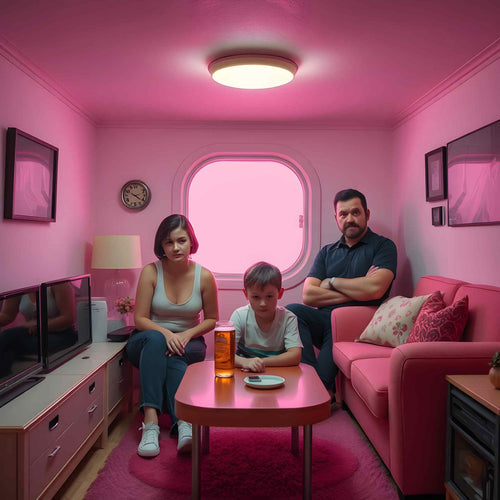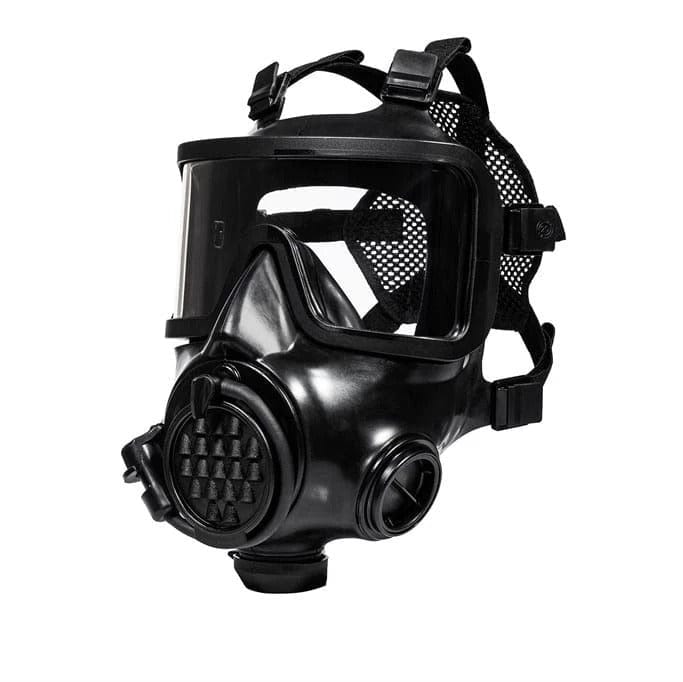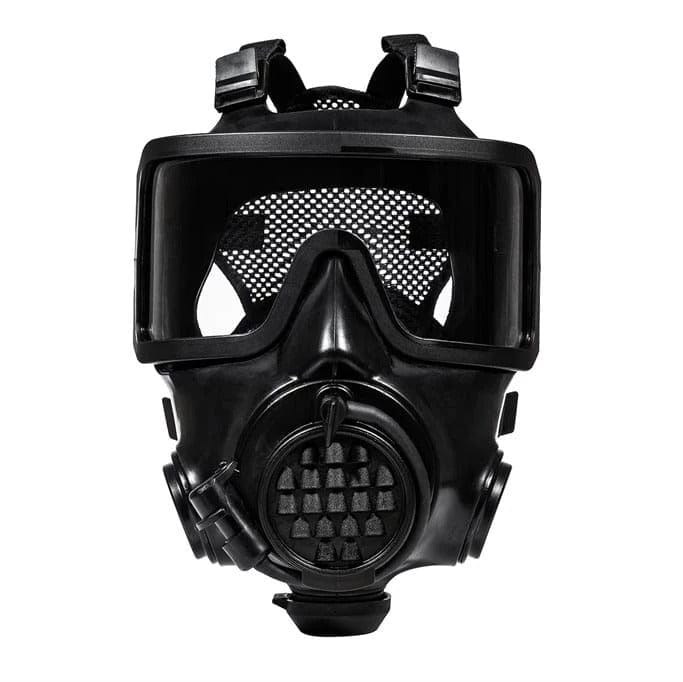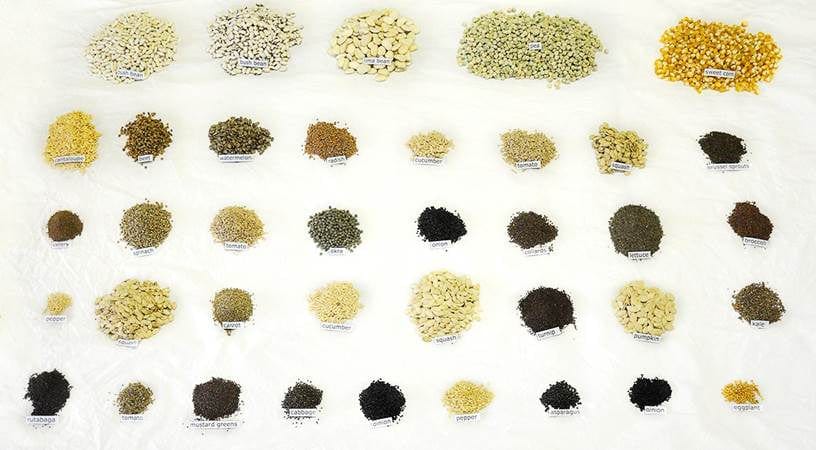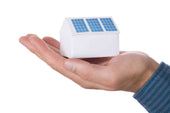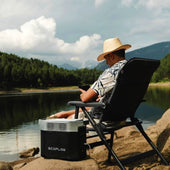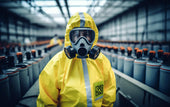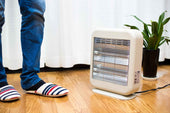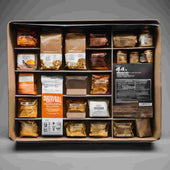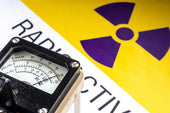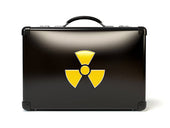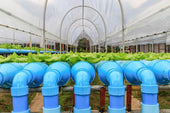Underground bunkers are essential underground structures intended to protect people from severe environmental dangers, including natural disasters, nuclear fallout, and even biochemical attacks.
These structures are designed to prevent outside interference, but air must be controlled in such an environment.
Enclosed spaces can very easily become dangerous if there is little airflow and circulation to clean the air.
Comfortable air filtration systems ensure that the air in the spaces inhabited remains fresh, with appropriate contaminants removed and a proper fresh supply brought in.
The Basics of Air Filtration in Bunkers
Bunker air filtration systems are designed to maintain air quality by filtering the bad particles and supplying continuous circulation. These NBC filtration systems comprise essential components, each with a specific role:
-
Filters: It is a first line of defense — capturing particulates and airborne toxins in the sinuses.
-
Fans: This helps maintain a steady airflow through filtration.
-
Ducts: These are used to distribute the filtered air that has been filtered through channels.
Bunker filtration systems are unlike most other HVAC systems. They are designed to provide comfort while maximizing survivability. They are useful in extended-stay situations like chemical leaks, viral outbreaks, or fallout contamination.
Key Features of Bunker Air Filtration Systems
For a bunker air filtration system to be effective, it must include several advanced features designed to handle extreme conditions:
-
Sealing and Isolation: Effective sealing prevents unfiltered external air from infiltrating the bunker. Air access points are very limited, and even common avenues require pre-filtration to help prevent debris from entering.
-
HEPA and ULPA Filters: HEPA fits out a device to eliminate 99.97% of tiny particles measuring 0.3 microns, whereas ULPA mechanisms take it a notch higher by protecting against even tinier particles. These filters are needed to exclude biological hazards like bacteria and viruses.
-
Activated Carbon Filters: These filters eliminate CBR agents by adsorbing toxic gases, VOCs, and other hazardous materials since they are designed to do just that.
-
Backup Power Systems: As filtration systems are critical, they are accompanied by emergency power supplies like a generator or battery as a backed-up power supply unit.
How Air Filtration Systems Work
Air filtration systems used in underground nuclear bunkers also require special means to maintain optimum air quality at all times, regardless of the prevailing risk.
Here’s a more detailed look at how they work:

Air Intake Process:
Multi-Stage Filtration:
- Coarse Pre-Filters: Remove large flies, beetles, and mosquitoes from your home and eliminate fungus spores, viruses, mildews, bacteria, and allergens.
- HEPA or ULPA Filters: Nanoparticles and biologics, such as bacteria or virus spores, are also filtered out.
- Activated Carbon Filters remove toxic fumes, gases, vapors, other chemicals, and unpleasant smells. These filters are often applied with impregnation agents to improve their effectiveness against certain hazards, such as ammonia or sulfur.
Airflow Regulation and Fans:
Pressure Systems:
Continuous Monitoring:
Redundancy and Fail-Safes:
Most systems contain fail-safes, so no one failure type puts the whole system at risk. Ideally, computer settings and systems designs incorporate backup fans, filters, and power supplies.
Bunker air filtration systems combine these processes and technologies to increase reliability and efficiency, enabling people to live comfortably in any condition.
Types of Threats Air Filtration Systems Address
Bunker air filtration system is meant to protect against all types and sources of environmental and man-made threats and protect occupant’s health and safety.
Below is an expanded view of the major threats these systems mitigate:

Biological Threats:
- The main type of filtration system used in HEPA filters is ideal for capturing airborne pathogens like bacteria, viruses, and fungal spores.
- These systems lower disease risk in confined spaces essential in pandemics or biological warfare.
- Advanced systems can also use ultraviolet (UV) sterilization to kill pathogens that pass through the filters.
Chemical Threats:
- Activated carbon filters absorb and neutralize toxic gases, such as chlorine, ammonia, and sarin.
- These filters prevent dust from entering industrial equipment and handle industrial chemical leaks and hazardous vapors, maintaining air quality even in chemically contaminated zones.
- Specialized chemical agent-impregnated carbon filters are included in some systems.
Radiological Particles:
- A fallout from nuclear events causes the fine radioactive particles in the atmosphere. Isotopes such as cesium-137 and iodine-131 are trapped with high-efficiency filters, which prevent them from making it into the bunker.
- Large and microscopic particles are removed and multi-stage filtered, reducing exposure to harmful radiation levels.
General Pollutants:
- As do bunker filtration systems in removing everyday airborne contaminants such as dust, pollen, and urban smog.
- While not as dangerous an immediate threat, these pollutants can affect the air quality, resulting in respiratory issues in the long run.
Designing an Effective Air Filtration System for a Bunker
Planning an air filtration system for a bunker means more than selecting the filter types and sizes.
There is a need to make sure that the system being implemented addresses the needs of the environment and is in a position to offer continuous protection during any disaster.

Here’s how to design an effective system:
-
Assess Bunker Size and Occupancy
-
Plan for Extended Duration of Stay
The system must operate optimally during the project's expected delays. It should include multistage filtration, many backup filters, and additional features like dual fans and power outlets for longevity.
-
Choose Appropriate Filtration Stages
Introduce a multi-stage filtration system. Large, coarse prefilters are used, followed by HEPA or ULPA filters for viruses and other particulate matter and activated carbon filters to counter chemical threats. These stages ensure that the processed air does not contain biological, chemical, or radiologic pollutants.
-
Ensure Compatibility with Life-Support Systems
There is no reason why the air filtration system should not be incorporated with the other critical service lines: oxygen tanks, carbon dioxide absorbers, and humidity control apparatus. This integration checks that the quality of the surrounding fresh air is good and will not produce any harm when taken in by the occupants, especially during the worst weather conditions.
-
Incorporate Backup Power and Monitoring Systems
Provide the system with batteries or generators so it can continue operating without power. Employ sensors to detect pollution and alert people inside the building of any problems or when they are due for cleaning or replacement.
-
Design for Easy Maintenance and Redundancy
Design it to make it easy to get the filters, fans, and all other parts to be changed or installed. Redundancy is important; we add extra systems or backups to allow the system to run still if some parts are not working properly.
Ventilation System for an Underground Bunker with No Electricity
Ventilation is a critical issue in an underground bunker, and proper ventilation becomes hard without electricity.
However, several practical workarounds can afford a temporary resolution and keep significant air circulation.
Here’s how to approach ventilation without relying on electricity:
Manual Ventilation Systems
-
Hand-Cranked Fans: These systems work by having people operate fans with their hands with a view of moving air. They are in no way perfect over an extended period but can offer the needed circulation when the need arises.
-
Pedal-powered fans: Like hand-cranked fans, pedal-powered fansy depend on pedal mechanisms and are less tiring for long hours of use.
Natural Ventilation Systems
-
Air Channels: Choosing the design of air ducts that encourage natural air circulation through the variation in temperature or pressure in the bunker and outside air.
-
Wind Scoops: Natural wind within structures can be guided from the outside, but these structures require proper care to prevent pollutants.
Challenges and Considerations
-
Limited Efficiency: Natural and manual ventilation are generally less efficient than powered ventilation and may not adequately provide satisfactory conditions for larger bunkers or protracted periods.
-
Dependence on External Conditions: Natural ventilation methods include wind or temperature differentials, which are not easy to control since they depend on natural resources.
-
Contamination Risks: To eliminate damaging particles or gases, it is recommended that the air drawn into natural or manual systems be passed through a HEPA or activated carbon filter.
Best Practices
-
Integrate mechanical solutions with natural solutions to take advantage of thermal convection systems.
-
Always use simple barriers concerning filtration to keep contaminants out.
-
Educate and train occupants on using manual ventilation tools to supply air during an emergency.
What Is the Best Way to Filter Air in a Nuclear Fallout Shelter/Bunker?
To filter out air in a nuclear fallout shelter requires a system designed to handle its unique set of hazardous threats.
Here are the key components and strategies for achieving optimal air filtration:
Multi-Layered Protection
Layering filtration systems provide complete protection against multiple contaminants. This method treats different types of airborne threats at different stages of the filtration process.
-
HEPA Filters:
-At least remove 0.3-micron particulate to remove at least 99.97%.
-Radiological dust and spores and other microscopic contaminants.
-
Activated Carbon Filters:
-Chemical threat neutralizers (CTNs) neutralize chlorine gas, sarin, and volatile organic compounds (VOCs).
-Impregnants can be added to enhance it, particularly for chemical warfare agents.
-
ULPA Filters:
-HEPA filters can provide even greater filtration efficiency than HEPA filters and can capture ultra-fine particulates from radiological guide fallout.
Positive Pressure Systems
It is impossible to prevent unfiltered air from entering the space without the ability to create positive pressure and maintain the same amount of positive pressure.
-
Controlled Internal Environment:
-It prevents external contaminants from being sucked in through small gaps but instead pushes them out through small gaps.
-
Enhanced Airlocks:
-There are airlocks to prevent contamination at entry or exit and to keep pressure inside to keep internal pressure and purity.
Backup Power Systems
Power to the filtration system is critical during extended emergencies, so the power system is essential.
-
Redundant Power Sources:
To guarantee continuous operation during long power outages, the system should be backed up by backup generators, batteries, or solar panels.
-
Manual Overrides:
-Use hand cranks or pedal power tools to ventilate the area when the electrical systems go out in an emergency.
Airlocks and Controlled Intakes
The starting point for avoiding contaminants entering your living space is air intake and shelter entry.
-
Use of Airlocks:
-
Pre-Filters at Intakes:
-Prefilters should be installed at air intakes to catch larger debris before it reaches the main filtration system.
Continuous Monitoring Systems
Timely action and safety over the longer term require real-time air quality tracking.
-
Air Quality Sensors:
-Integrate sensors to detect harmful particles, gases, particulates, and malfunctions within your system.
-
Alarms and Notifications:
-Have alarms installed when contamination levels increase or when maintenance is needed.
Maintenance and Redundancy
Reliability and efficiency depend on a well-maintained system for a long period of use.
-
Spare Components:
-According to the instructions, keep spare filters, pre-filters, and critical parts easily available for quick replacement.
-
Regular Testing:
Test the system periodically to ensure it is still working and capable of dealing with any threats.
How Do Deep Underground Bunkers Have a Dependable Supply of Breathable Air?
Deep underground bunkers are needed for long-term survival. They need a safe room with a dependable supply of breathable air. Advanced technology and integrated life support systems provide air quality in a self-contained environment.

Controlled Air Intakes
The first line of defense in maintaining air quality is controlled air intake. These systems carefully control and sieve incoming air into the bunker, preventing contaminants or smoke from entering.
-
Filtration Systems:
-Multi-stage filtration systems provided to air intakes consist of HEPA filters for particulate threats and activated carbon filters for neutralizing chemical threats.
-During periods of high external toxicity, the systems are tightly sealed to prevent the intake of contaminants.
-
Adjustable Intakes:
The air intake levels can be adjusted to reflect external air quality or shut off strictly if the sealed environment is exceptionally contaminated.
Oxygen Management
Since there is no natural airflow, oxygen management systems take care of the oxygen supply when there is breathable air at all times, even during an emergency.
-
Oxygen Tanks:
-If the air intake system fails, then oxygen tanks are stored.
-They are frequently rigged to regulators to distribute just as much oxygen as is required.
-
Oxygen Generators:
-Other bunkers feature oxygen generation systems that make O2 (oxygen) from water or stored chemicals through electrolysis or other techniques.
Carbon Dioxide Scrubbers
When occupants breathe, CO2 levels within the structure can rise rapidly; thus, removing it is critical to creating a safe environment.
-
Scrubber Systems:
-The CO2 air filtration system purges CO2 gas from the air before it accumulates in dangerous amounts.
-Such systems employ material sorbs such as soda lime or lithium hydroxide to convert CO2 effectively.
Continuous Monitoring
To have equalized air quality, technological equipment offers constant control and signals.
-
Air Quality Sensors:
-Conventional sensors monitor oxygen, carbon dioxide, and several other gases, often constantly.
-Certain linked alarms are activated when the detected gas concentrations are near dangerous levels to perform an immediate correction.
-
System Performance Monitoring:
-Filtration performance is controlled by automation, and issues prompting filter replacement or system service generate alarms.
Redundancy and Fail-Safes
Duplications and backups guarantee that air supply systems are on the line and ready to function as designed should a contingency arise.
-
Backup Systems:
-Redundant air filtration units, contiguous power sources, spare life-supporting supplies, etc.
-Emergency backup fans – manual ventilation fans– and manually operated and pedal-operated fans are also provided for power augmentation.
-
Maintenance Protocols:
-Schedules and spare parts are easier to manage and maintain than new systems, keeping systems functional longer.
Practical Tips for Bunker Owners
When living in a bunker, it is important to keep the air filtration system working properly when emergency needs occur. Here are some practical and actionable tips:
1. Schedule Regular Testing and Maintenance
-
Routine inspections are performed on all system components (filters, fans, and sensors)
-
Worn-out or clogged filters should be replaced as quickly as possible so that the efficiency is not reduced.
-
A little air leakage around ducts or seals can make the system less airtight.
-
Confirm readiness of test backup power sources such as generators and batteries.
2. Stock Essential Spare Parts and Supplies
-
Replacement filters for all stages of filtration, including HEPA or activated carbon filters, are kept.
-
Extra batteries, lubricants, and cleaning tools are required as routine maintenance stock.
-
Wire and fuses are always spared when the occasion arises.
3. Train Occupants on System Operation
-
Detail how to operate the air filtration in both normal and emergency conditions.
-
Residents should be trained to recognize and take action when they hear unusual noises or low airflow.
-
If the power or system dies, click for a great (old) manual ventilation drill.
4. Implement a Maintenance Log
-
Note each inspection, replacement, and repair to monitor system performance over time.
-
Also, use this log to figure out issues and patterns that keep showing up.
5. Invest in Protective Measures
-
It's worth the investment to install surge protectors to shield electrical components from power spikes.
-
Pre-filters should be installed on secure air intake points to stop a premature clog of the system.
6. Plan for Long-Term Emergencies
-
Stock for prolonged operation includes backup power and further filters.
-
Monitor supply levels and start replacing things before they become too low.
Conclusion

Air filter systems are not simply technological equipment; they are lifesavers that allow you to survive in the toughest environment possible. These systems are the first and most vital line of defense in underground bunkers, where the consequences are extraordinary against everything from radiological fallout to biological agents.
Well-designed systems integrating advanced filtration, redundancy, and real-time monitoring can offer protection and peace of mind.
However, these systems are kept up and running when needed by taking regular maintenance activities, taking preparedness measures, having parts ready, and having people trained.
Future innovations in air filtration technology, including self-cleaning filters, AI-driven monitoring systems, and more compact, energy-efficient designs, will help further enhance bunker safety.
For people seeking refuge from modern threats, investing in and maintaining a strong air filtration system is necessary and integral to sustainable and secure sheltering real estate.

